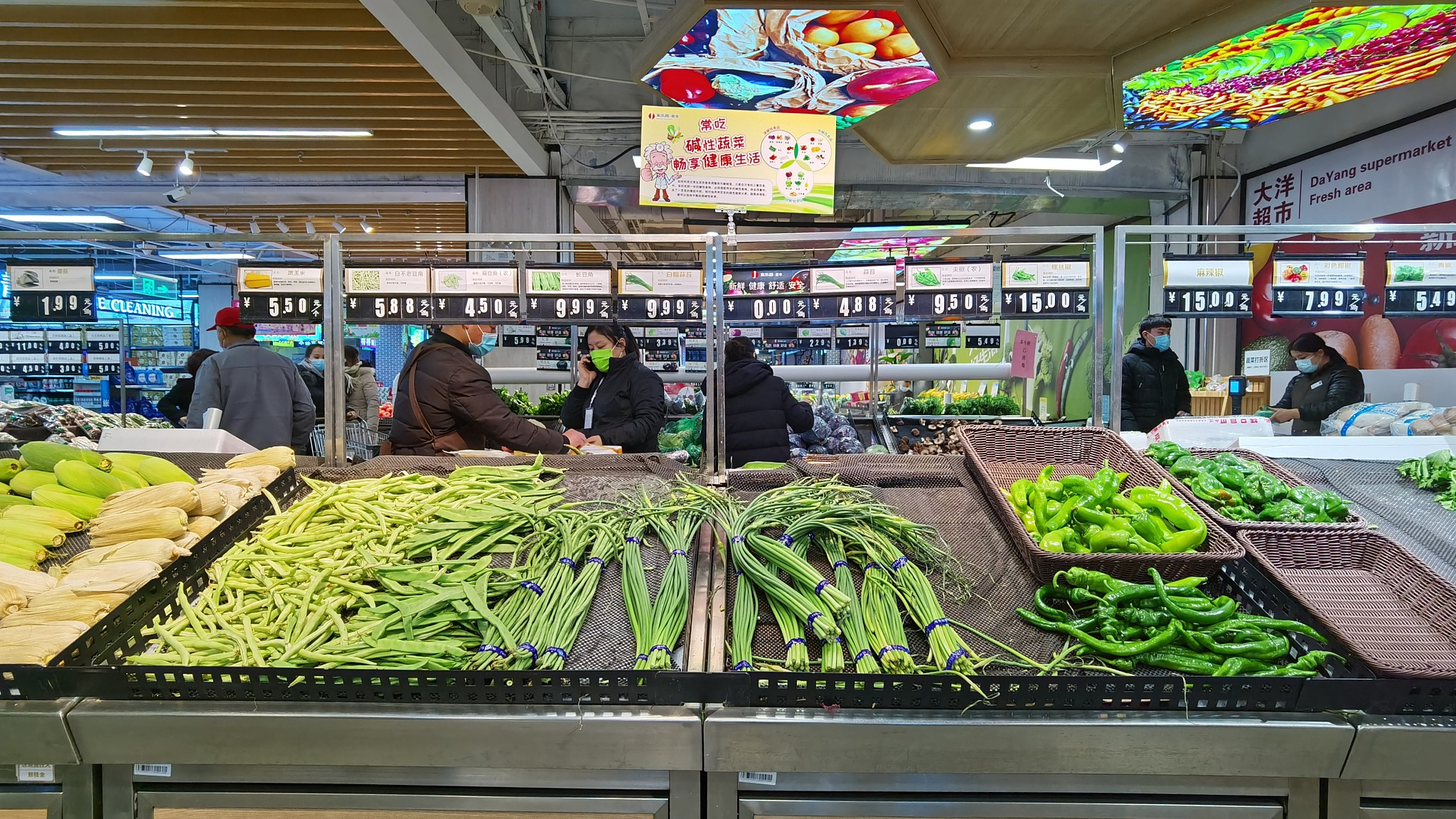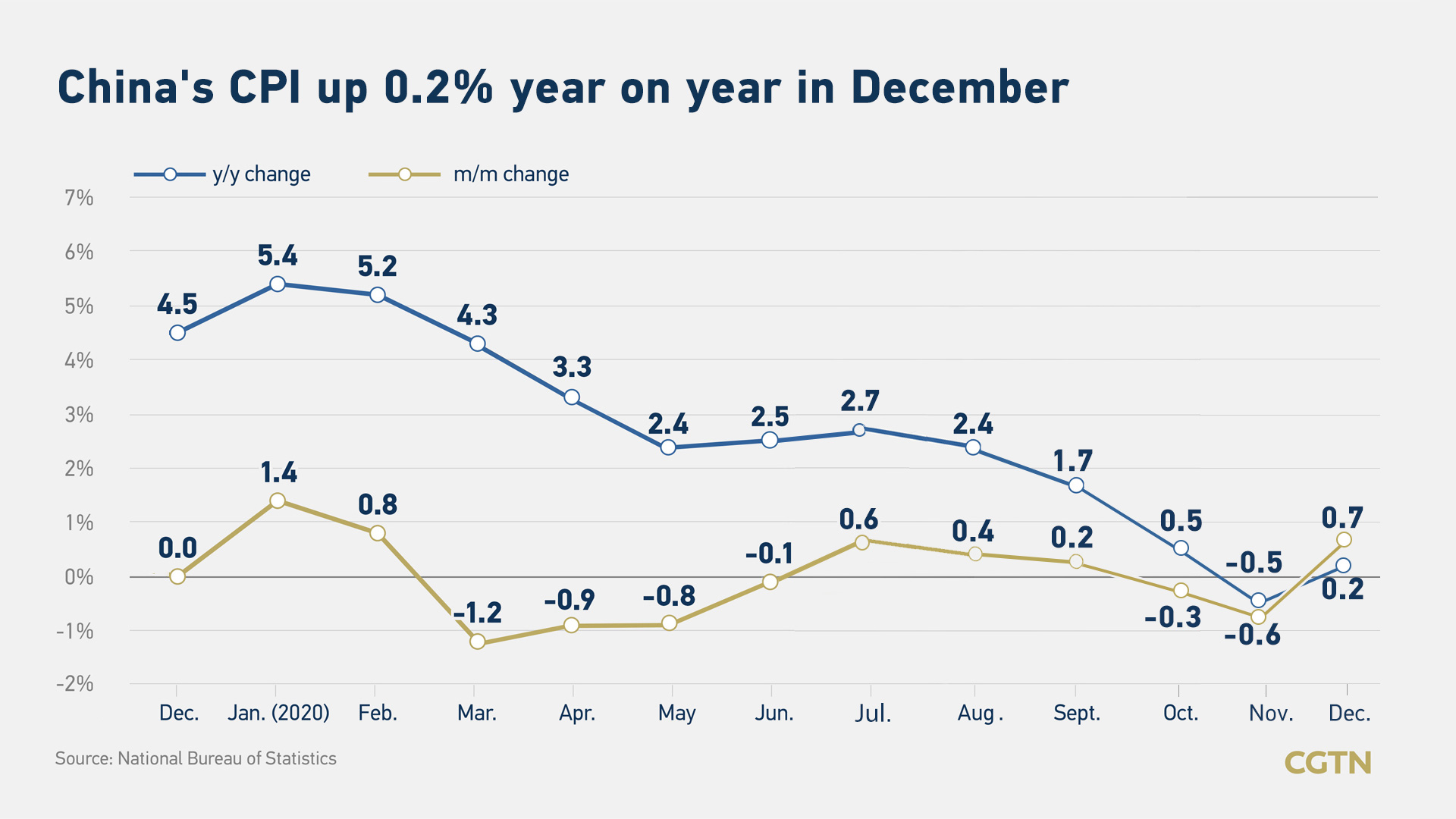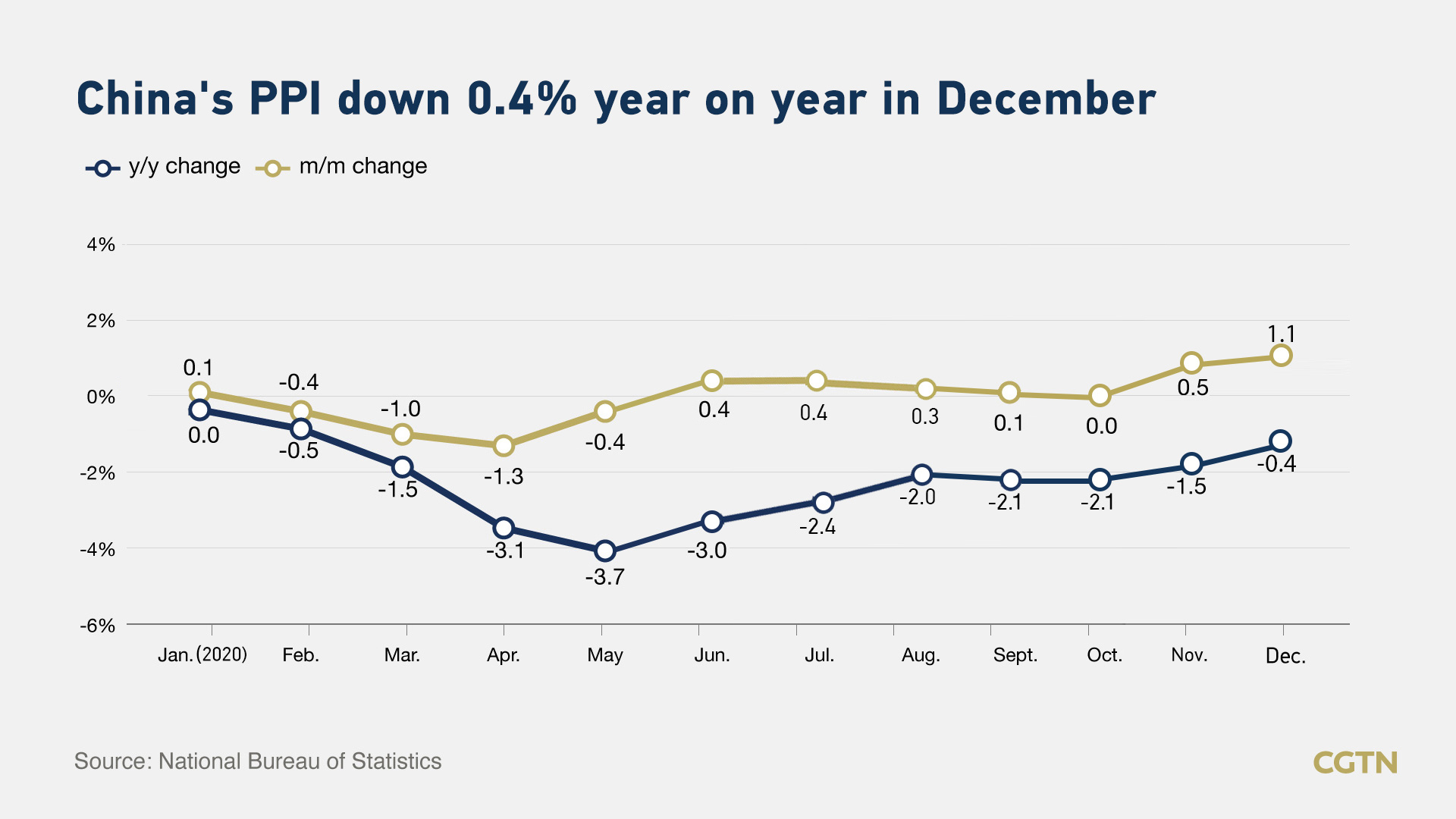
A supermarket in Xingtai, north China's Hebei Province, January 6, 2021. /CFP
A supermarket in Xingtai, north China's Hebei Province, January 6, 2021. /CFP
China's consumer price index (CPI), a key gauge of retail inflation, rose by 0.2 percent in December from a year earlier due to food price increases and rising demand amid festivals, the National Bureau of Statistics (NBS) said on Monday.
The figure reversed the negative territory of -0.5 percent in November, which was the first decline since 2009.
A Reuters poll expected the index to rise by 0.1 percent. And 14 Chinese institutions collected by the Wind Information database also showed an average forecast of 0.1 percent for December's CPI.

The production, storage and transportation costs of vegetables and fruits have increased due to the cold weather. The New Year holiday and the coming Spring Festival also drive consumer demand, said Dong Lijuan, a senior statistician with the NBS.
Vegetables and food prices both rose by 6.5 percent year on year in December, and the prices of beef and mutton both rose by 4.6 percent. The price of aquatic products rose by 1.7 percent, while the price of livestock meat rose by 0.6 percent year on year, NBS data showed.
"The rise in CPI inflation was mainly driven by the rebound of pork price inflation to -1.3 percent year on year in December from -12.5 percent in November. Excluding pork, CPI inflation rose slightly to 0.3 percent year on year in December from 0.1 percent in November, suggesting core CPI inflation has been largely stable," said Lu Ting, chief China economist at Nomura.
In month-on-month terms, pork price inflation turned positive in December, rising to 6.5 percent in December from -6.5 percent in November, well above its December 2019 print (-5.6 percent), he added.
Of the non-food categories, transportation and communication price inflation dropped by 3.1 percent year on year in December. Medical and health care prices rose by 1.3 percent, while education, culture and entertainment prices rose by 0.9 percent year on year in December, data showed.
For the whole year, the CPI rose by 2.5 percent year on year in 2020.

PPI decline narrows
The producer price index (PPI), which measures goods cost at factory gate, fell by 0.4 percent from a year earlier in December, easing from the 1.5-percent drop in November, and beating the Reuters poll of 0.8-percent decline.
Specifically, the prices of means of production fell by 0.5 percent year on year in December, which was 1.3 percentage points lower than the previous month. The price of means of subsistence fell by 0.4 percent, easing 0.4 percentage points from November.
The rise of PPI inflation was broadly based among upstream sectors, due to the strong growth recovery in China and a rise in global commodity prices, Lu said.
Specifically, PPI inflation for the mining and raw materials sectors rose to -0.4 percent and -1.6 percent year on year, respectively, in December from -3.6 percent and -4.2 percent in November. PPI inflation for the processing sector also increased over the same period, Lu added.
Dong said the steady recovery of domestic demand, coupled with the continued rise in the prices of some international commodities, such as iron ore and non-ferrous metals, has driven the continued rise in prices of industrial products, especially prices of metal-related industries.
The PPI of the non-ferrous metal smelting and rolling processing industry surged by 8.3 percent year on year in December, expanding 4.2 percentage points.
The PPI of the oil and natural gas extraction industry, however, decreased by 27 percent year on year in December, while that of the oil, coal and other fuel processing industries dropped by 12.5 percent year on year.

